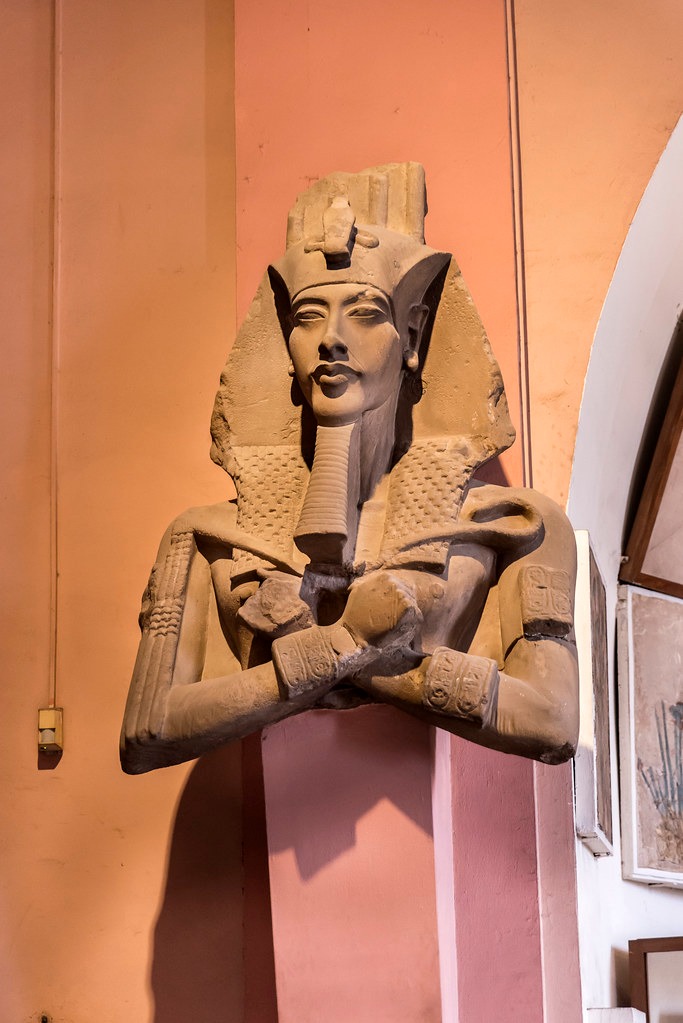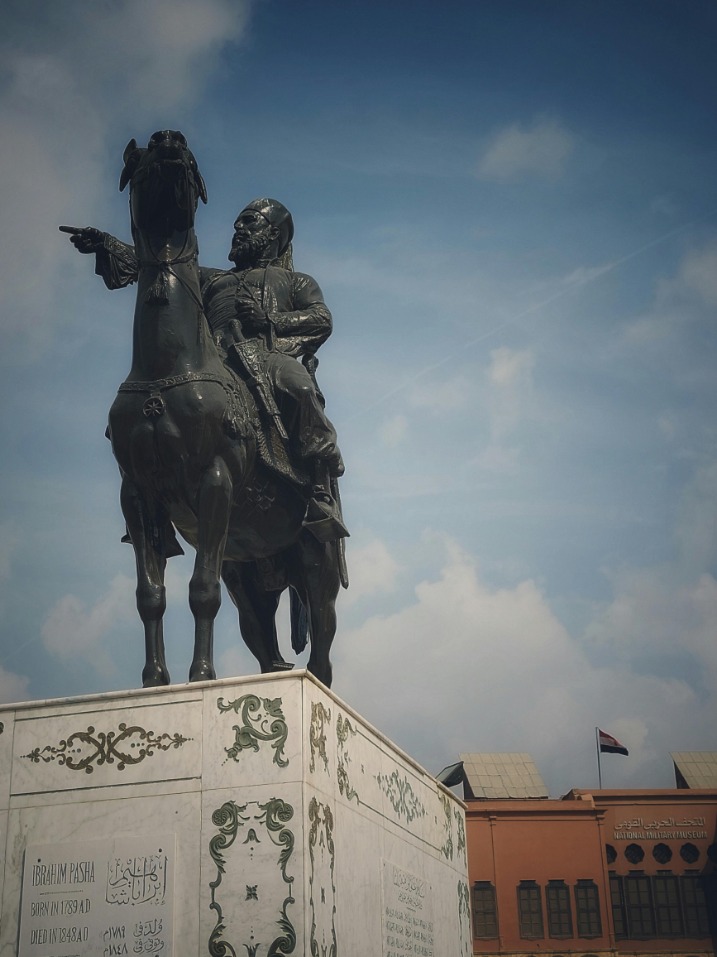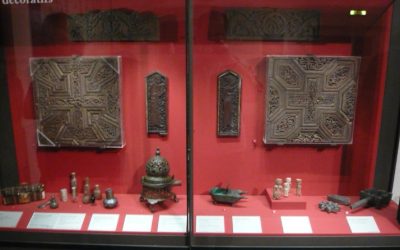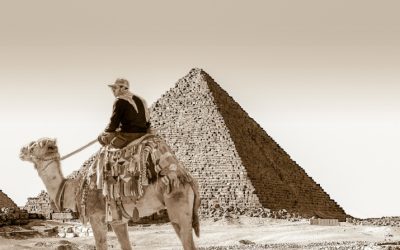Early Life and Background of Akhenaten
Akhenaten, originally named Amenhotep IV, was an ancient Egyptian pharaoh renowned for his revolutionary religious changes. Born into the royal family during the 14th century BCE, he was the son of Pharaoh Amenhotep III and Queen Tiye. Growing up amidst the grandeur of the Egyptian court, Akhenaten was exposed to the complex religious traditions of his time before he later sought to introduce a new monotheistic worship centered around the sun disk, Aten. His early life laid the foundation for his distinctive reign, marked by profound shifts in Egyptian religion and culture.
Parentage and Birthplace
Akhenaten, originally known as Amenhotep IV, was an ancient Egyptian pharaoh renowned for his revolutionary religious reforms. His early life and background remain partially shrouded in mystery, but historical evidence offers some insights into his origins. He was born during the Eighteenth Dynasty of Egypt, a period marked by significant political and religious transformation.
Regarding his parentage and birthplace, Akhenaten was the son of Pharaoh Amenhotep III and Queen Tiye. His father, Amenhotep III, was a powerful ruler who presided over a period of prosperity and artistic flourishing in Egypt. His mother, Queen Tiye, was highly influential and respected, often depicted as a wise and compassionate queen. Akhenaten was born in Thebes, the religious and political capital of Egypt at the time, which played a central role in his upbringing and early education.
- Parentage:
- Father: Amenhotep III, a prominent and prosperous Pharaoh of Egypt.
- Mother: Queen Tiye, a respected and influential queen known for her intelligence and political acumen.
- Birthplace:
- Thebes, Egypt, the spiritual and administrative center during his early years.
Ascension to the Throne
Akhenaten, originally named Amenhotep IV, was born into the Egyptian royal family during the 14th century BCE. He was the son of Pharaoh Amenhotep III and Queen Tiye, placing him in a prominent position within Egypt’s 18th Dynasty. His early life was likely spent receiving a classical education in administration, religion, and leadership, preparing him for future roles as a ruler.
As a prince, Akhenaten was exposed to the complex religious landscape of Egypt, which was dominated by traditional polytheistic practices centered around gods like Amun. His upbringing within the royal court provided him with access to high-ranking officials and priests, shaping his understanding of the political and religious power structures of the time.
Akhenaten ascended to the throne around 1353 BCE following the death of his father, Amenhotep III. His accession marked a significant turning point in Egyptian history, as he would later introduce revolutionary religious reforms. The transition to his kingship was characterized by consolidating power and establishing a new religious ideology that would come to define his reign.
Initial Reign and Titles
Akhenaten, originally named Amenhotep IV, was born into the Egyptian royal family during the 14th century BCE. His early life remains largely unknown, but it is believed that he was the son of Pharaoh Amenhotep III and Queen Tiye, which positioned him for succession to the throne. Growing up amidst the luxuries and political influences of the Egyptian court, Akhenaten was exposed to traditional religious practices before he eventually sought to challenge them.
His initial reign marked a significant shift in religious and cultural practices in Egypt. Akhenaten is most renowned for his revolutionary religious reforms, notably establishing the worship of Aten, the sun disc, as the exclusive deity. During this period, he adopted new titles such as “The Unique Favor of Aten” and “Revered of Aten,” reflecting his devotion to the new god. His accession to the throne was characterized by efforts to consolidate power around this new religious ideology, which eventually led to the abandonment of traditional gods and temples in favor of those associated with Aten.
Religious Reforms and Monotheism
Religious reforms and the emergence of monotheism have played significant roles in shaping ancient civilizations. One of the most notable figures associated with such profound religious change is Akhenaten of Egypt, who challenged traditional beliefs and promoted a singular worship centered around the sun disk, Aten. His reforms marked a dramatic shift in Egyptian spirituality and had lasting impacts on the cultural and religious landscape of the era.
Shift from Polytheism to Aten Worship
Akhenaten, the ancient Egyptian pharaoh, is renowned for initiating significant religious reforms that marked a dramatic departure from traditional polytheistic worship. His reign is characterized by the move towards monotheism centered on the worship of Aten, the sun disk. This shift represented a radical transformation in religious practice, emphasizing the worship of a single deity over the numerous gods previously revered in Egyptian culture.
Akhenaten’s promotion of Aten as the sole divine entity redefined Egypt’s spiritual landscape, replacing the complex pantheon with a focus on this life-giving celestial body. The reforms sought to establish Aten not only as the supreme god but also to elevate the sun disk as the ultimate source of life and order. This mono-centric worship challenged the established religious institutions and priesthoods, leading to significant upheaval in Egyptian society.
The move from traditional polytheism to Aten worship under Akhenaten’s reign can be seen as one of the earliest examples of monotheistic religion in history. It reflected a broader ideological shift towards a more personal and direct relationship between humans and the divine. Although the reforms were largely reversed after Akhenaten’s death, their legacy highlights a remarkable episode of religious innovation and reform in ancient Egypt’s history.
Iconoclasm and Religious Changes
Akhenaten, an ancient Egyptian pharaoh of the 18th Dynasty, is renowned for revolutionary religious reforms that fundamentally changed the spiritual landscape of Egypt. He advanced the concept of monotheism by promoting the worship of Aten, the sun disk, as the sole deity, dissolving traditional polytheistic practices centered around gods like Amun and Osiris. This shift represented a significant departure from long-standing religious traditions and challenged the established priesthoods, especially the powerful priesthood of Amun.
Akhenaten’s religious reforms also involved iconoclasm, where he actively removed or defaced depictions of other gods from temples and monuments. This iconoclastic approach was aimed at consolidating religious authority around Aten and diminishing the influence of older deities, thereby reinforcing the concept of monotheism. The art and iconography during his reign reflect this change, emphasizing the solar disk and depicting Akhenaten in a more naturalistic style, diverging from traditional Egyptian artistic conventions.
These religious changes, initiated by Akhenaten, marked a profound departure from Egypt’s religious norm and led to a temporary monotheistic belief system known as Atenism. However, after his death, traditional polytheistic practices were gradually restored, and his successors abandoned the exclusive worship of Aten. Nonetheless, Akhenaten’s religious revolution remains one of the most unique episodes in ancient Egyptian history, illustrating the power of religious renewal and reform in shaping cultural and spiritual identity.
Promotion of the Aten Disc

Akhenaten, the ancient Egyptian Pharaoh, is most notable for his radical religious reforms that marked a significant shift from traditional polytheistic worship to monotheism. He promoted the worship of the Aten, the sun disk, as the sole deity, establishing a monotheistic belief system that emphasized the importance of the sun’s disk as the central divine force. This shift was revolutionary at the time, challenging the long-standing religious customs centered around a pantheon of gods and goddesses.
Under Akhenaten’s rule, the promotion of the Aten Disc became the core of religious practice. He declared the Aten as the supreme and only god, symbolizing this through the depiction of the sun disk radiating rays that extended toward the king and his family. The Aten was worshipped as the universal creator and sustainer of life, with Akhenaten positioning himself as the primary intermediary between the deity and the people. This religious transformation aimed to focus worship solely on the Aten, diminishing the influence of other gods, particularly Amun, whose temples and priesthoods gained great power during previous eras.
This shift in religious focus also manifested in changes to royal inscriptions, art, and architecture. Temples dedicated to the Aten replaced traditional elaborate temple complexes, and art styles emphasized simplicity and directness, often featuring the royal family in intimate contact with the sun disk. Overall, Akhenaten’s religious reforms represented a profound departure from the historical polytheistic tradition of Egypt, emphasizing monotheism and promoting the Aten Disc as the central divine authority in Egyptian life.
Artistic Innovations and Cultural Changes
Akhenaten, the ancient Egyptian pharaoh, is renowned for his profound influence on artistic innovations and cultural transformations. During his reign, he introduced revolutionary changes that challenged traditional religious and artistic conventions, leading to a distinctive style that emphasized naturalism and intimacy. These developments not only redefined Egyptian art but also reflected significant shifts in cultural and spiritual beliefs, marking a remarkable period of evolution in Egypt’s history.
Amarna Artistic Style
Akhenaten’s reign marked a significant shift in Egyptian art and culture, characterized by the emergence of the Amarna Artistic Style. This innovative artistic period broke away from traditional conventions, emphasizing naturalistic and expressive portrayals of the human form. Art from this era often depicts exaggerated features such as elongated heads, narrow waists, and elongated limbs, reflecting a move toward more individualized and realistic representations rather than idealized perfection. These changes not only highlight artistic creativity but also reflect the profound cultural upheaval initiated by Akhenaten’s religious reforms, which centered around the worship of Aten, the sun disk.
The Amarna Artistic Style also introduced a sense of intimacy and realism in depictions of the royal family and gods. Royal portraits became more informal and personal, often showcasing Akhenaten and his family in relaxed poses within natural settings. This departure from the highly formalized and rigid Egyptian art of previous periods signifies a broader cultural change, emphasizing personal religiosity and a direct connection to the divine. Overall, Akhenaten’s artistic innovations represent a radical departure from tradition, embodying the transformative social and spiritual shifts under his rule.
Depictions of Akhenaten and Family
Akhenaten’s reign ushered in significant artistic innovations that marked a departure from traditional Egyptian conventions. His depictions emphasized naturalism and realism, often portraying him with a softer physique and more intimate expressions, contrasting sharply with the idealized, rigid images of previous pharaohs. This shift reflected his religious revolution, which focused on the worship of Aten, the sun disk, and emphasized personal devotion over traditional hierarchy. The artworks from his reign highlight a more personal and informal portrayal of the royal family, breaking away from the formal, stiff poses characteristic of earlier periods.
The cultural changes during Akhenaten’s rule extended beyond art, as he attempted to reshape Egyptian society by promoting monotheism and elevating the Aten above other gods. This religious shift influenced the depiction of his family, emphasizing their divine connection and unity. The images of Akhenaten, Queen Nefertiti, and their children often depict affectionate interactions, a rarity in earlier royal representations. These depictions underline a more familial and approachable image of the royal family, reflecting the ideological and spiritual transformation Akhenaten sought to implement across Egypt. The emphasis on family in art served to reinforce the idea of divine kinship and renewed religious devotion among his subjects.
Architectural Developments in Amarna
Akhenaten’s reign marked a significant period of artistic innovations and cultural changes in ancient Egypt, primarily driven by his religious revolution centered around the worship of Aten. This shift led to a dramatic transformation in artistic styles, emphasizing more naturalistic and expressive representations of the human form, moving away from the traditional idealized and rigid portrayals. The art of this period prioritized depictions of the royal family with a sense of intimacy and realism, reflecting the religious focus on personal devotion and the connection between the gods and the ruler.
Architecturally, Akhenaten introduced revolutionary developments, most notably the construction of the new city of Amarna. The city featured innovative design elements such as open courtyards, wide avenues, and distinctive, elongated structures that broke away from conventional Egyptian temple layouts. The main religious site, the Great Temple of Aten, showcased large open-air spaces intended to facilitate sunlight worship, emphasizing the solar disk as the central divine symbol. These architectural innovations exemplified a departure from traditional Egyptian sacred architecture, embodying a new religious ideology and a bold cultural shift during Akhenaten’s reign.
Political and Diplomatic Activities
Akhenaten, an influential ancient Egyptian pharaoh, is renowned for his significant political and diplomatic activities that shaped the history of Egypt. His reign marked a period of religious revolution and strategic diplomacy, impacting the political landscape and international relations of the time. Understanding his efforts provides insight into the complexities of ancient Egyptian governance and diplomacy.
Domestic Policies
Akhenaten, an ancient Egyptian pharaoh of the 18th Dynasty, is notable for his revolutionary political and religious reforms that significantly impacted domestic policies. His rule marked a departure from traditional polytheistic worship toward the exclusive worship of Aten, the sun disk, which he promoted as the supreme deity. This religious shift influenced political decisions, as Akhenaten centralized religious authority and diminished the power of traditional priesthoods, especially those of Amun. Domestically, Akhenaten undertook efforts to reform the societal hierarchy, encouraging the worship of Aten among all social classes and promoting the royal family’s exclusive relationship with the deity. His diplomatic activities included establishing new religious centers and asserting Egypt’s religious independence, which altered foreign relations temporarily as he focused on consolidating his new religious doctrines. Akhenaten’s policies were characterized by a desire to reshape Egyptian society along monotheistic lines, which led to significant internal upheaval but also to a brief period of religious innovation in ancient Egypt’s history.
Foreign Relations and Military Campaigns
Akhenaten, an ancient Egyptian Pharaoh of the 18th Dynasty, is renowned for his radical political and religious reforms which significantly impacted Egypt’s foreign relations and military activities. During his reign, Akhenaten prioritized establishing the worship of Aten, the sun disk, over traditional deities, leading to a shift in religious and cultural policies that influenced diplomatic interactions with neighboring regions.
His foreign relations were marked by a period of relative stability, but also notable military campaigns aimed at consolidating Egypt’s borders and expanding its influence. Akhenaten engaged in diplomatic negotiations with various city-states and regional powers to secure trade routes and alliances, although detailed records of these efforts are limited. Notably, his reign saw the maintenance of Egypt’s traditional diplomatic contacts, often conducted through envoys and diplomatic correspondence.
Militarily, Akhenaten’s focus was somewhat reduced compared to his predecessors, as he emphasized religious reform and internal stability. However, records suggest that he led campaigns into regions such as Nubia and the Levant, aiming to control vital trade routes and buffer zones. These military endeavors helped to assert Egypt’s dominance in the Near East and secure its southern frontier, contributing to Egypt’s power and prestige during his rule.
Impact on Egypt’s Administration
Akhenaten’s political and diplomatic activities had a profound impact on Egypt’s administration, signaling a significant shift in religious and cultural policies that influenced governance. His establishment of a monotheistic worship of Aten disrupted traditional religious structures, leading to administrative changes to support this new religious focus. Akhenaten centralized religious authority around himself, which in turn affected the political hierarchy, diminishing the power of traditional priesthoods and consolidating control within the royal court. Diplomatic relations during his reign also reflected his religious reforms, often emphasizing new alliances and treaties that reinforced his religious ideology. These activities transformed Egypt’s political landscape, leading to temporary instability but ultimately shaping the religious and administrative fabric of Egypt for generations. The centralized approach and ideological reforms introduced by Akhenaten redefined the balance of power among Egypt’s ruling and religious elites, illustrating the interconnectedness of religion and governance in ancient Egyptian administration.
Family and Personal Life
Family and personal life played a significant role in the reign of Akhenaten, the ancient Egyptian pharaoh known for his religious revolution. His relationships and familial connections helped shape the political and religious landscape of Egypt during his time. Exploring his family life provides insights into his personal influence and the legacy he left behind in Egyptian history.
Consort and Children
Akhenaten, the ancient Egyptian pharaoh, is known not only for his revolutionary religious reforms but also for his distinctive family and personal life. His consort, Queen Nefertiti, played a significant role in his reign and was highly respected, often depicted alongside him in various reliefs. Their marriage was notable for its strength and partnership, which defied traditional norms of Egyptian royalty at the time. Akhenaten and Nefertiti are believed to have had several children, including Tutankhamun, who would later become one of Egypt’s most famous pharaohs. These children were often shown in religious and royal contexts, emphasizing the importance of family continuity and divine association in their rule. The family life of Akhenaten reflects a blend of personal devotion, political symbolism, and the unique religious ideology that defined his reign.
Relationship with Nefertiti
Akhenaten, the ancient Egyptian Pharaoh, was known for his revolutionary religious beliefs and his distinctive personal life. His family and personal relationships played significant roles in his reign and the cultural shifts during his time. He was married to Queen Nefertiti, who is often celebrated for her beauty and influence. Their marriage is believed to have been close and supportive, and Nefertiti held considerable power alongside Akhenaten, often depicted in royal artwork participating in religious ceremonies. They had several children together, some of whom succeeded Akhenaten as Pharaohs, indicating a stable dynastic family structure. The relationship between Akhenaten and Nefertiti exemplifies the importance of familial bonds in maintaining political stability and religious reforms. Their partnership was not only personal but also symbolic of the new worship of Aten, which they promoted throughout Egypt. Overall, their family life reflects a dominantly private sphere that intertwined deeply with their public religious reforms and rulership.”
Legacy of Royal Family
Akhenaten, the ancient Egyptian Pharaoh, is notable not only for his revolutionary religious reforms but also for his impact on his family and his lasting legacy. His personal life was marked by his deep devotion to the god Aten, which influenced his familial relationships and domestic policies. Akhenaten’s marriage to Queen Nefertiti produced several children, who were often depicted close to their parents, emphasizing the importance of family unity in his reign.
In terms of family and personal life, Akhenaten is believed to have maintained a close and affectionate relationship with his wife Nefertiti, and they shared a joint throne for a period. The royal family was at the center of his religious reforms, which aimed to elevate the worship of Aten above traditional Egyptian gods. His children, possibly including King Tutankhamun, were likely involved in the royal court and ceremonies, symbolizing continuity and stability within his change-oriented regime.
The legacy of the royal family of Akhenaten extends beyond his lifetime, as his attempts to establish monotheism left a profound mark on Egyptian history. While his religious revolution was eventually reversed, the family images, inscriptions, and artistic styles introduced during his reign influenced later Egyptian art and beliefs. Akhenaten’s legacy is also preserved through the renowned depiction of his family, especially Nefertiti, which continues to be celebrated for its beauty and significance. His dynasty is remembered for its bold departure from tradition and its influence on the religious and cultural evolution of ancient Egypt.
Death and Burial
Death and burial practices in ancient Egypt hold profound significance, reflecting the Egyptians’ beliefs in the afterlife and the importance of ensuring immortality. These rituals and tomb traditions were meticulously designed to honor the deceased and provide a secure passage to the next world. In the context of Akhenaten, a revolutionary pharaoh known for his religious reforms, these practices also reveal insights into the changing spiritual landscape of ancient Egypt during his reign.
Unknown Circumstances of Death
Akhenaten, the ancient Egyptian Pharaoh, is renowned for his revolutionary religious reforms and distinctive artistic style. Despite his prominence, the circumstances surrounding his death and burial remain shrouded in mystery, leading to speculation and numerous theories among historians. The exact cause of his death is unknown, with some suggesting natural causes, while others propose foul play or illness that was not recorded definitively.
The location of Akhenaten’s tomb is also uncertain. While some believe he was buried in a secret tomb in the Valley of the Kings, others argue he may have been interred in a different site, possibly in a hidden or undiscovered location. His burial chamber, if located, has yet to be conclusively identified, and the tomb’s condition remains a subject of ongoing archaeological investigation.
The ambiguous circumstances of Akhenaten’s death and burial continue to fascinate scholars, contributing to the mystique surrounding his reign and life. This uncertainty adds to the intrigue of his monumental religious and artistic innovations, making him a compelling figure in ancient Egyptian history whose final days remain a mystery.

The Amarna Tomb and Memorials
Akhenaten, the ancient Egyptian pharaoh, is renowned for his revolutionary religious beliefs and distinctive artistic style. His reign marked a significant departure from traditional Egyptian religious practices, emphasizing the worship of the Aten, the sun disk, as the sole deity. This shift profoundly impacted the burial practices and memorials associated with his reign. Akhenaten’s death and burial were centered around his royal tomb, which was part of the Amarna archaeological site, illustrating the unique artistic and cultural characteristics of his time. The tombs from this period often feature aniconic art and altered religious symbolism, reflecting the monotheistic focus of his regime.
The Amarna Tomb, notably the tomb of Akhenaten himself, located at Amarna, showcases a departure from conventional Egyptian tomb architecture. It emphasizes a more naturalistic style and depicts scenes that highlight the relationship between the king, the gods, and the natural world. Memorials dedicated to Akhenaten, including statues and reliefs, serve to propagate his religious reforms and reinforce his divine status. These memorials are often characterized by their simplified and elongated artistic forms, contrasting with the more traditional, idealized representations of earlier dynasties. Despite attempts to erase his legacy after his death, Akhenaten’s tomb and memorials remain vital in understanding this transformative period in Egyptian history.
Aftermath and Succession
Akhenaten, the ancient Egyptian pharaoh, is notable for his religious revolution and the dramatic changes he initiated during his reign. Death and burial practices for Akhenaten reflected the transition from traditional Egyptian customs to new ones influenced by his monotheistic beliefs centered on Aten. His tomb in the Valley of the Kings was abandoned, and the site of his burial remains uncertain, signifying the upheaval in funerary traditions caused by his reforms.
The aftermath of Akhenaten’s death brought significant political and religious consequences. The subsequent rulers, especially Tutankhamun, sought to restore the traditional religious practices and revive the old gods, reversing Akhenaten’s monotheistic focus on Aten. This period of upheaval resulted in the defacement or abandonment of monuments associated with Akhenaten and his unique religious ideology.
Succession after Akhenaten was marked by instability and rapid succession of rulers, attempting to reestablish the old religious order. The shift in power dynamics led to efforts by successors to erase or diminish the influence of Akhenaten’s reign, with his successors promoting a return to traditional gods and restoring the political and religious structures that had been altered during his rule. This tumultuous period illustrates the profound impact that his religious and cultural reforms had on the ancient Egyptian state.
Historical Significance and Legacy
Akhenaten’s reign marked a transformative period in ancient Egyptian history, fundamentally altering religious beliefs and artistic expression. His dedication to the exclusive worship of the sun disk, Aten, challenged long-standing traditions and reshaped the cultural landscape of Egypt. The legacy of Akhenaten continues to intrigue scholars and historians, offering insights into periods of religious upheaval and the enduring impact of visionary leadership in shaping civilization’s course.
Impact on Egyptian Religion
Akhenaten’s reign marked a profound turning point in Egyptian history through his radical religious reforms. His dedication to the worship of Aten, the sun disk, shifted Egypt’s spiritual focus away from traditional gods like Amun and Osiris, leading to the establishment of the first known monotheistic religion in the ancient world. This shift not only altered religious practices but also had lasting cultural and artistic impacts, characterized by a departure from conventional Egyptian art styles and an emphasis on realism. Although his religious reforms were largely reversed after his death, Akhenaten’s influence persisted in subsequent periods and inspired later religious and philosophical ideas. His legacy endures as a symbol of revolutionary change, exemplifying how leadership can challenge entrenched traditions to forge new spiritual paths that resonate beyond their immediate context.
Historical Perspective on Akhenaten’s Reign
Akhenaten’s reign marks a transformative period in ancient Egyptian history, primarily due to his radical religious reforms that shifted the nation’s focus from traditional polytheistic worship to the exclusive worship of Aten, the sun disk. This shift not only redefined religious practices but also had profound political and cultural implications, challenging centuries-old traditions and hierarchy. Akhenaten’s establishment of a monotheistic or henotheistic religion was unprecedented in Egyptian history, and his efforts to centralize religious authority under Aten caused widespread upheaval and resistance among the priesthood and populace.
In terms of legacy, Akhenaten’s religious innovations initially faded from prominence following his death, as subsequent rulers, including his son Tutankhamun, restored the old gods and reversed his reforms. Nevertheless, his artistic style and the depiction of naturalistic, more realistic figures influenced later periods and constituted a significant departure from the conventional idealized forms. His brief but intense reign served as a precursor to later monotheistic ideas, and his devotion to Aten laid foundational concepts that would resonate in religious thought long after his dynasty. The archaeological and artistic remnants of his rule continue to intrigue scholars, offering unique insights into a bold experiment in religious and political reform in ancient Egypt.
Archaeological Discoveries and Ongoing Research
Akhenaten, the revolutionary Egyptian pharaoh of the 18th Dynasty, revolutionized ancient Egyptian religion and art during his reign, leaving a profound impact on history and culture. His establishment of a monotheistic worship centered on Aten marked a significant deviation from traditional polytheistic beliefs, influencing subsequent religious developments and reflecting the dynamic religious landscape of ancient Egypt. Akhenaten’s rule also introduced distinctive artistic styles characterized by more naturalistic and expressive forms, which continue to intrigue scholars and historians today.
Archaeological discoveries related to Akhenaten, including the examination of his abandoned city, Amarna, and heretofore unrecognized artifacts, have provided invaluable insights into his reign and legacy. The city of Amarna served as the epicenter of his religious reforms and offers a unique glimpse into the political and cultural milieu of his time. Ongoing excavations and research continue to uncover new artifacts, inscriptions, and architectural details, shedding light on the socio-economic and religious aspects of his reign.
The continuous study of Akhenaten’s legacy reveals the complexities of his rule, including the widespread resistance to his reforms and the eventual erasure of his name from many historical records. Modern archaeology and technology, such as high-resolution imaging and DNA analysis, are increasingly enabling scholars to better understand his life, his family—particularly the mysterious figure of Nefertiti—and the broader implications of his religious revolution. These ongoing efforts ensure that Akhenaten remains a pivotal figure in Egyptology, embodying both innovation and controversy in ancient history.





0 Comments